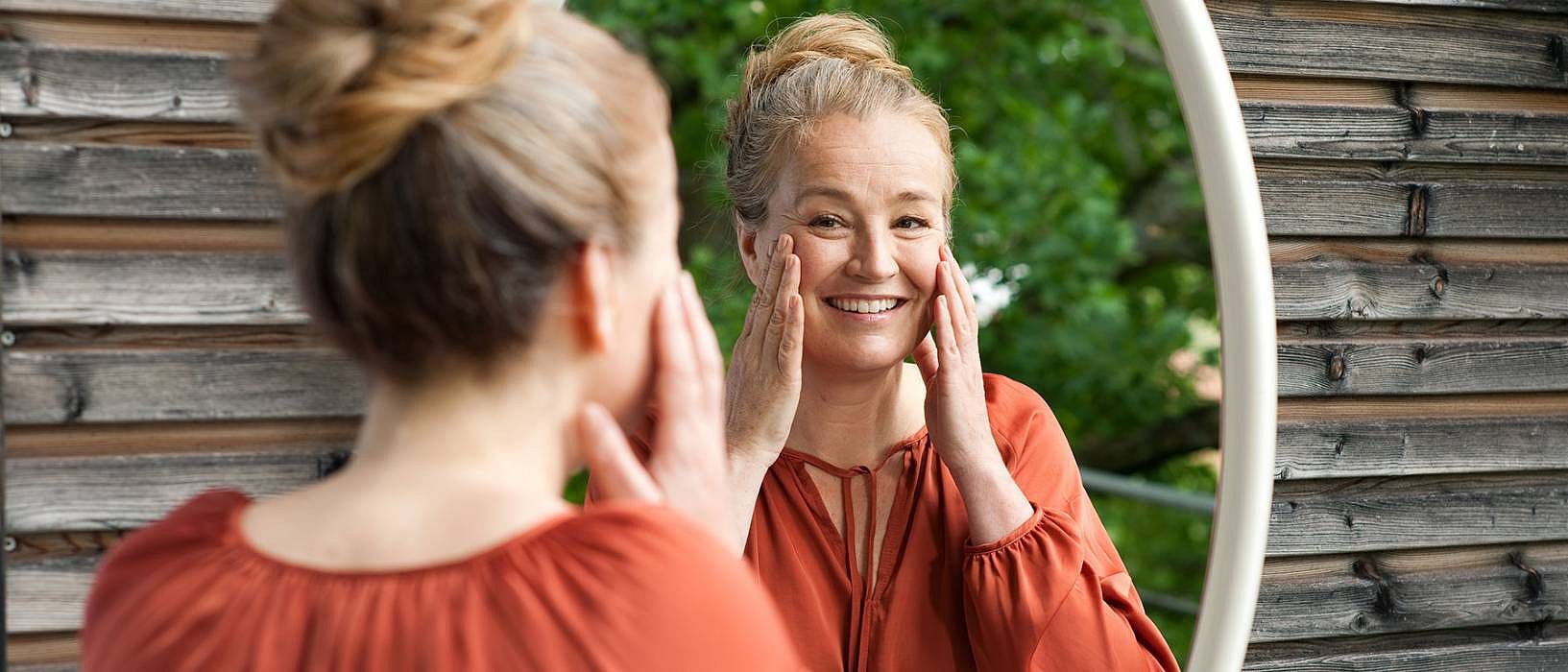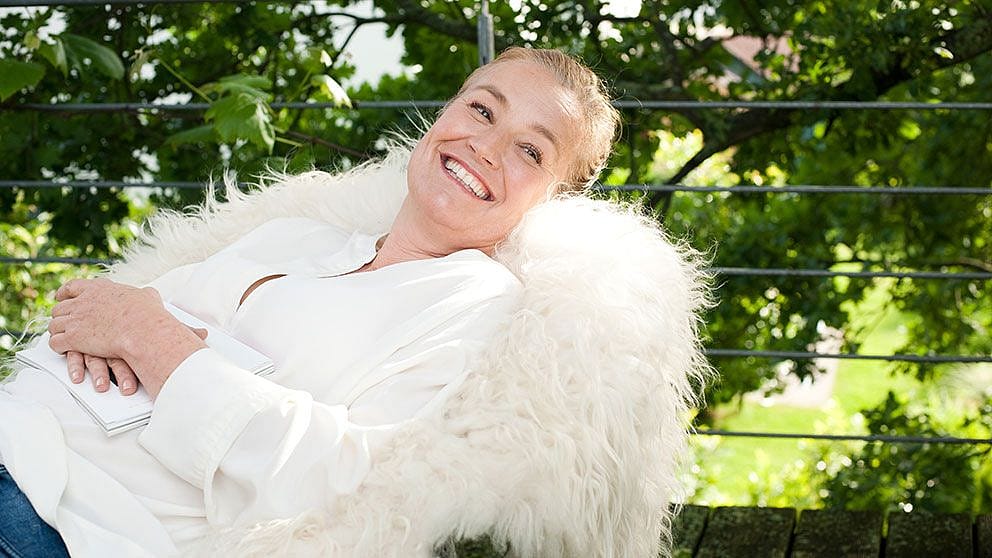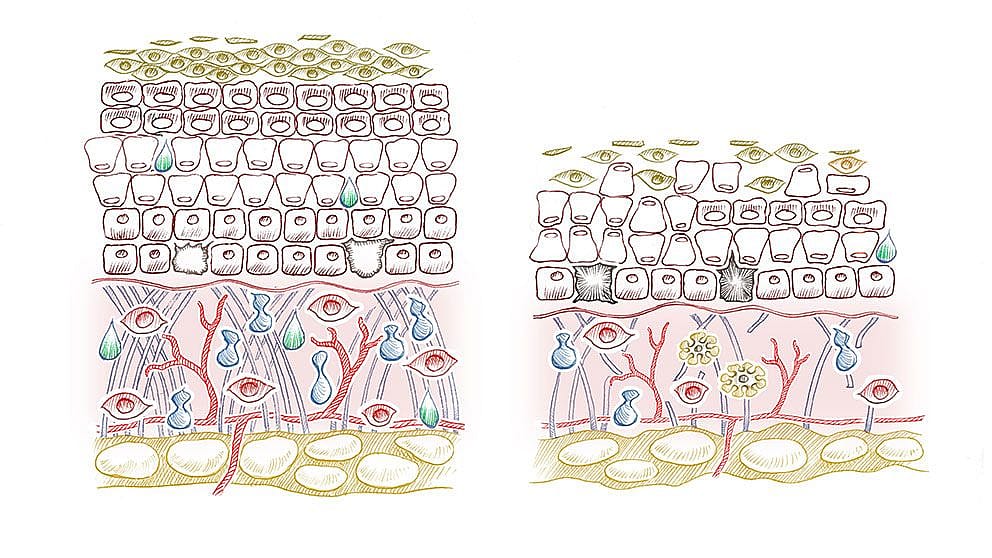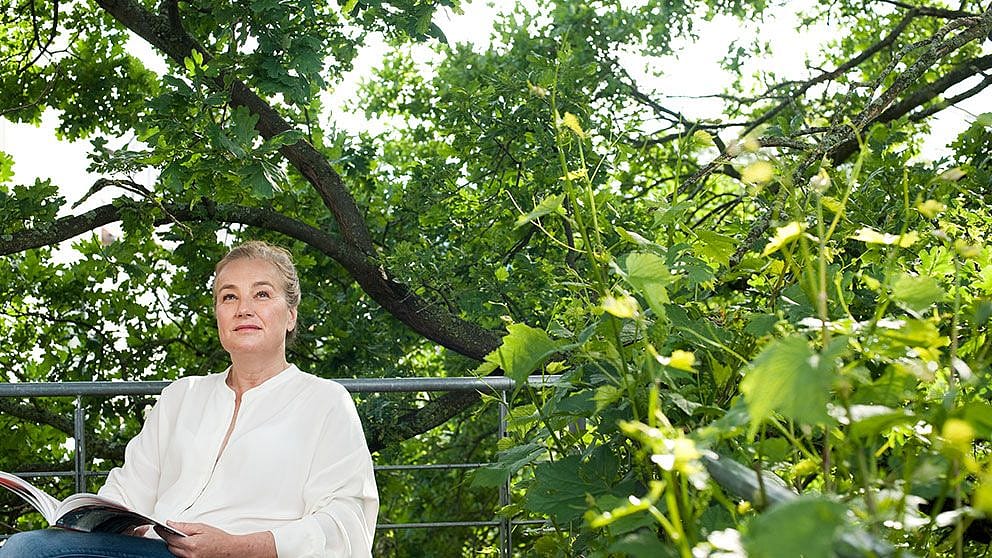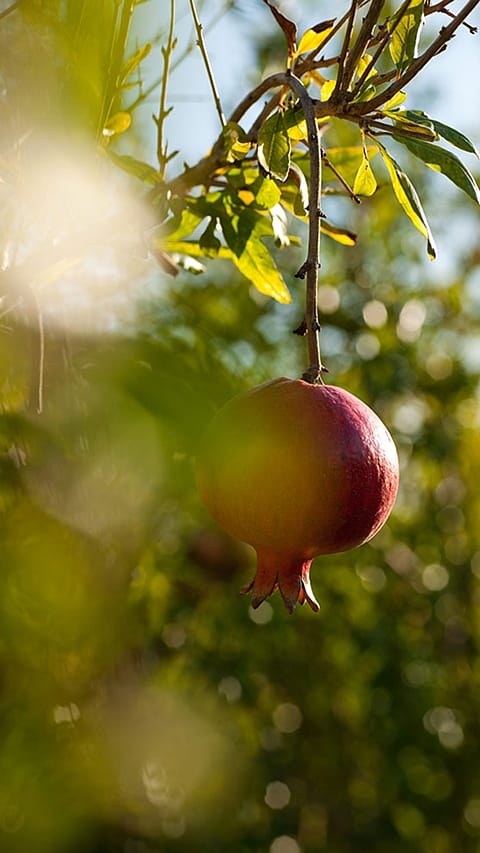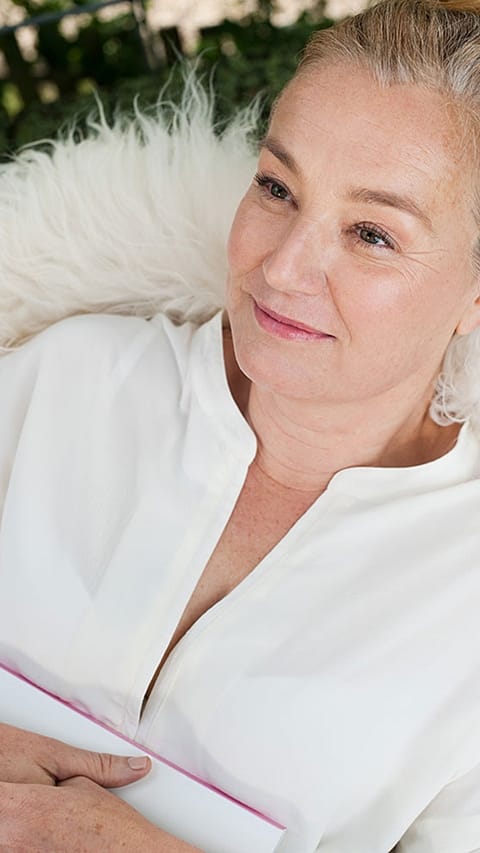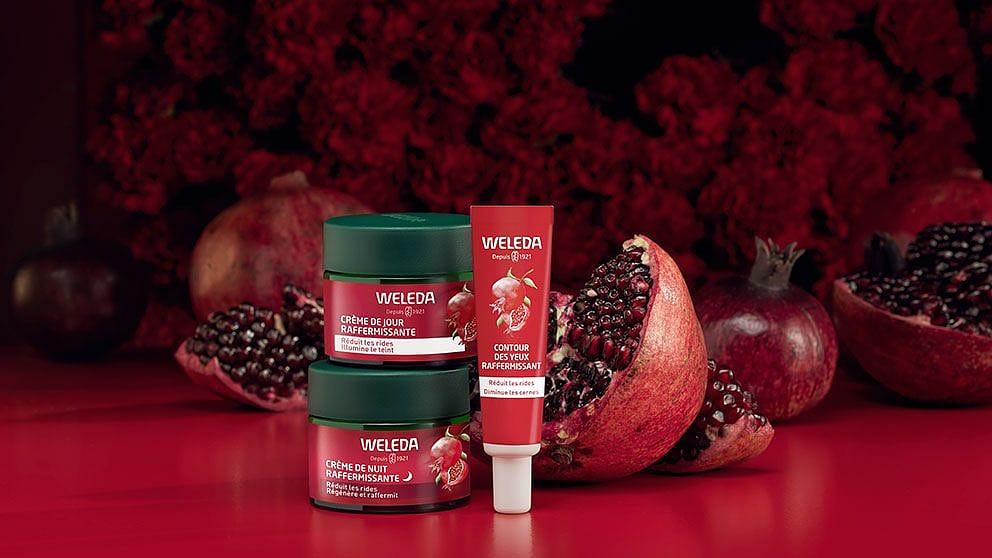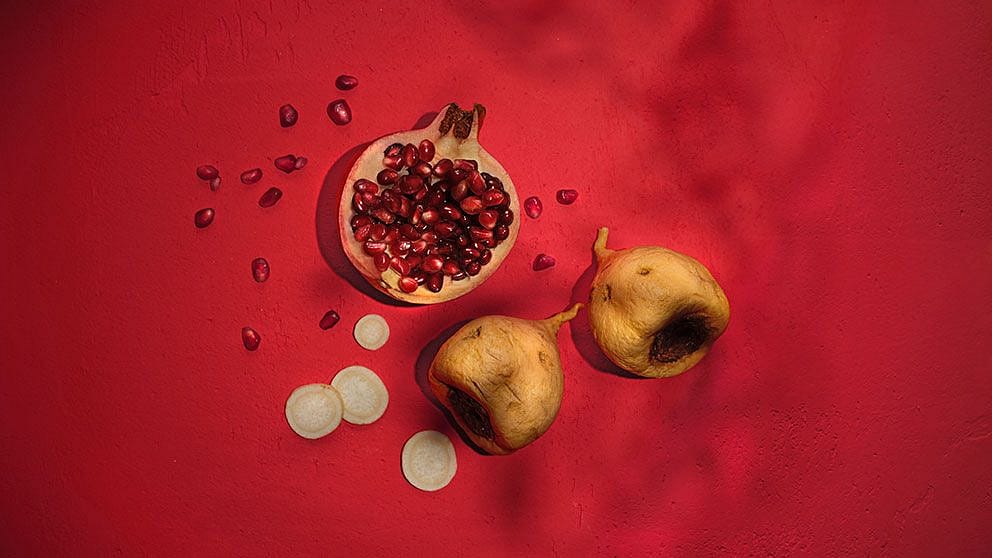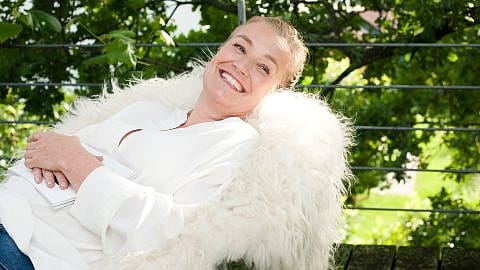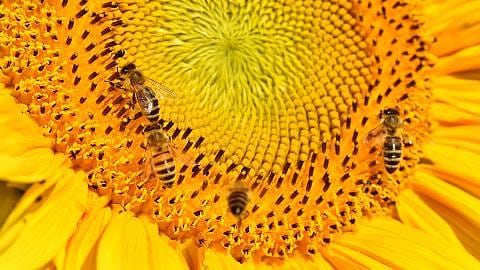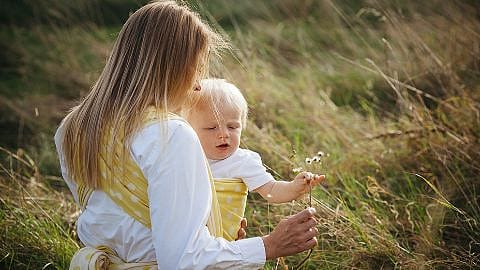Know your skin cycles – what phase are you in right now?
Skin care, nutrition, rest: Tips to prevent premature aging of the skin
Our skin tells the stories of our lives. We spoke with our Weleda Doctor Sandra Johansson, who is also a dermatologist, about how our skin changes over time and what we can do to support it.
What happens in our skin during ageing – and how do our wrinkles and fine lines develop?
Sandra Johansson M.D.: As we move through different life phases, our physiology and our whole constitution change. Being part of that whole, our skin also changes and adapts, and so do its needs. Skin ageing is caused by a combination of a natural ageing process and exposure to outer influences that prematurely age the skin.
Let us first get to know the skin so we can recognise the coming changes. Did you know the skin has three distinct layers, all performing different functions while working together as the largest organ in our body? It is a living boundary, constantly in flux and has the amazing ability to multitask. It can sense, feel, protect and produce substances our body needs. It protects us against external germs, water loss, temperature change, trauma, UV radiation and more.
The thinnest, outermost layer is called the epidermis – this is the protective layer. Water and fats cover it, making the skin to be supple and pliable. It is inhabited by an ecosystem of beneficial bacteria and fungi that we are only now learning about.
Further inside is a middle layer called the dermis. It has many functions. Cells called fibroblasts produce a network of collagen and elastin fibres, surrounding them with a lubricant of hyaluronic acid, giving the skin its volume, stability and elasticity.
In the lower part of this dermal layer, small blood vessels help regulate body temperature by adjusting blood flow to the skin and deliver well-needed nutrients. At the same time, lymphatic vessels take waste products out. Your body’s natural oils for protecting and moisturising your skin are also made there. All this makes the skin look healthy, glowing, and vibrant.
Our innermost, deepest skin layer is made of fat cells that insulate us and cushion the vulnerable tissues. The process of ageing affects all of these layers. But there is a lot you can choose to do in order to make that process as healthy and beautiful as possible.
What happens in our skin during the natural process of ageing?
Sandra Johansson M.D.: Many ask, “Why do I suddenly have dry skin or more sensitive skin? I haven’t had it before.” The answer is: Your body changes with time, and so does your skin. The new Weleda book, Natural Wellness Every Day: The Weleda Way, expresses this beautifully when they write: “With age comes wisdom but also a longer skin cycle”.
The human body is a finely balanced system, and a new balance must be found over and over again. Our natural, biological process of ageing is called “intrinsic ageing”. Over time, the cells don’t function as well, and cell renewal takes longer.
We notice our usual plump, robust skin gradually becoming thinner. The outermost layer gets thinner by 6.4 percent a decade. The skin can become more sensitive and less elastic, and fine lines start to appear.
When does this ageing process start, and how does it look in each phase?
Sandra Johansson M.D.: From around our mid-20s, the mid-layer of the skin produces one percent less collagen each year. Thinning happens here as well, with less collagen, elastin and hyaluronic acid. The network they create is no longer as robust, later seen as wrinkling and sagging.
During our 30s, the transfer of moisture to the upper layer slows down, and fat cells in the innermost layer begin to shrink, causing the skin to look dull and thin.
When we reach our 40s, collagen and elastin fibres have degraded so much that they start to break, losing elasticity. Your skin no longer bounces back as well when you pinch it.
Around our 50s, the skin becomes dry as the sebaceous glands, which produce natural skin oils that help preserve moisture in the skin, decrease in size. The small blood vessels become thinner, resulting in a paler complexion. During menopause, loss of oestrogen causes the skin to be rougher and drier, no matter how many glasses of water you drink.
It’s easier to work with our natural cycles than going against them. By using the right skin care at certain times of the day will help optimize results.
Sandra Johansson M.D.
So our skin is constantly changing?
Sandra Johansson M.D.: The skin is never static. It is constantly adapting, renewing, and rebalancing as part of its daily maintenance while experiencing all the polarities of life. This self-regulating ability is a sign of health and healthy skin. Did you know your skin also has a cycle? It’s the skin’s natural rejuvenation process.
New skin cells are born at the base of the skin’s top layer (the epidermis), and they mature and journey their way up to the surface, replacing the old skin cells that flake off. This process is known as a “skin cycle” and can range from two to six weeks, depending on your life phase. It influences how your skin feels and looks. This is also why it takes time to see the effects of new skincare products.
But the older we become, the slower this renewal process takes. Other factors can also slow it down, such as the environment, stress levels, medications, diet and even certain skincare products. The slower the turnover, the more dead skin cells stay on the surface, causing dull, drier skin with lines and creases. The skin is also governed by the body’s natural rhythm of day and night – a 24-hour rhythm called the Circadian Rhythm.
Why should we know about the skin’s Circadian rhythm?
Sandra Johansson M.D.: This is the body’s inner biological clock that coordinates our bodily functions, governing sleep and waking cycles in the body. It also impacts the functioning of the skin. It has a different behaviour at night than during the day.
It’s easier to work with our natural cycles than go against them. Using the right skin care at certain times of the day will help optimise results. Our lifestyle habits change our rhythms and also that of the skin. We need adequate sleep for the best DNA repair in the skin.
The simplest things can have wonderful effects.
Sandra Johansson M.D.
What happens to our skin if we don’t get enough sleep?
Sandra Johansson M.D.: Normally, your skin goes into repair mode at night, eliminating cells that were damaged during the day, for instance by UV radiation or pollution. Fibroblast cells should be producing new collagen and elastin. But without enough rest, there isn’t enough repair either.
And what do we see the next morning in the mirror? We don’t feel our best, and as the skin hasn’t been given the opportunity to regain its balance, it starts to look dull, has less glow, feels drier, and those lines start to look deeper.
Respecting and working with your skin’s daily rhythms, getting to know your skin cycle, and how it changes with time (life’s phases) and life’s influences (nature’s seasonal phases) empowers you to optimally take care of its needs as they arise and change. And the simplest actions can have wonderful effects.
There is also “extrinsic ageing” – what does that mean?
Sandra Johansson M.D.: Added to the natural age-related changes are external, lifestyle influences and environmental factors that also affect signs of ageing. Our skin must cope with a lot from the outside: sun, pollution, smoking, poor diet, and especially sugar – all factors that accelerate the ageing process. The results are deeper wrinkles, coarser skin, dullness, loss of elasticity and patchy pigmentation.
Compare your skin that has rarely seen the sun to the back of your hands, chest and face. There is often a significant difference. These factors also affect children’s skin. The difference is their skin’s protective systems have yet to be overwhelmed with years of UV damage and collagen breakdown. Yet the processes have started. That’s why prevention is important. Stress and lack of sleep are part of our lifestyle that further influence skin changes.
Our skin, especially on our faces, tells stories of our unique lives. Let’s embrace that part!
Sandra Johansson M.D.
What exactly happens in our skin when we are exposed to these factors?
Sandra Johansson M.D.: There are three main ways our cells are damaged:
1) Oxidative Stress. There is an imbalance in the body between too many free radicals being produced and the amount the body can neutralise with its own internal antioxidants. Free radicals can then damage your collagen and even DNA.
2) Inflammation. This is one of the main enemies of any tissue, including skin cells.
3) Sugar in the body combines with proteins to form AGEs (Advanced glycation end products). These harmful compounds lead to collagen hardening, a weaker skin foundation, and premature skin ageing.
Is it possible to influence the ageing of our skin?
Sandra Johansson M.D.: Ageing is a part of life. Our skin, especially on our faces, tells stories of our unique lives. Let’s embrace that part! But the biggest impact comes from extrinsic ageing. That’s where the possibilities lie – you really do have the power to influence it. Further unnecessary damage can be prevented, and the skin’s ability to self-regulate and regenerate can be supported instead of constantly overwhelmed.
So, where does this power come from? It comes from the small, consistent choices we make every day. By approaching our skin holistically, considering everything from our environment to our daily nutrition, stress skills and sleep care, and choosing products that keep our skin active. Our skin supports us throughout our life. In turn, we can support it in the amazing work it does for us.
What role does nutrition play in the ageing process – can you give any tips here?
Sandra Johansson M.D.: The right foods will provide the power to help prevent skin damage and the power to promote skin regeneration. Eating for radiant, healthy skin also influences our overall health and well-being. Foods containing antioxidants are an important source of skin protection. Our body’s natural supply of antioxidants keeps going to fight free radicals. Foods are a great way to restock your skin’s store of antioxidants and renew skin protection.
There are many types of antioxidants. Carrots, for example, are a powerful source of a group called carotenoids. The liver can convert carotenoids into vitamin A, which stimulates collagen formation in the dermis. Another group of antioxidants are the rejuvenating polyphenols. Spices have a high source of polyphenols, with cloves having the highest concentration.
Other great sources of polyphenols are dark berries like aronia, and the skin or peel of many fruits and nuts, such as pomegranate and almonds. Keep in mind that no single food or supplements can be as powerful as a balanced, varied diet.
Be especially careful with foods that damage the skin. Excess sugar in the body damages collagen and blood vessels. Have you heard of “sugar sag”? It’s the sagging of the skin and premature wrinkling caused by collagen damage due to excessive sugar in the body. A healthy diet prevents this part of premature ageing as well.
What does our skin need when we are young – and what does it need when we get older? How can we support it in the ageing process?
Sandra Johansson M.D.: When it comes to promoting fresh, healthy skin, there are no quick fixes. Small repeated actions give the best long-term results. A holistic approach means that you’re looking at the whole picture. Various lifestyle factors impact your skin’s health, and they are interconnected.
Protecting your skin on the outside from UV radiation and other threats known to cause premature ageing is a real gift to your skin. Prevention is important in all life’s phases – this means in the early years as well. Skin damage slowly accumulates over the years. That’s hard to imagine and take seriously when you don’t see the damage yet. And that’s why skin knowledge is needed. Think of the body’s natural antioxidant, vitamin E, which already exists in the skin. It depletes very quickly with sun exposure. Before you have even turned pink, there has been a 50 percent reduction.
The antioxidant systems in the skin are robust, but with all they face on a daily basis, they need help. Choosing to be sun smart as a lifestyle habit will have long-term benefits. Avoiding sun damage will prevent excessive collagen & elastin breakdown, keeping your skin subtle and flexible longer.
Be aware of what the goal is with your skin care routine. Choose it to support the rhythm of your skin.
Sandra Johansson M.D.
Is there anything else we can do?
Sandra Johansson M.D.: Be aware of what the goal is with your skincare routine. Choose the right regimen to support the rhythm of your skin. The main goal of night-time skincare routine is repair and rejuvenation. Daytime skincare focuses on protection.
Caring for your sleep cycle will be great for your skin and overall vitality and resilience. You can further support your skin from within by providing high levels of nutrients to promote skin repair, as I mentioned above.
How can the new Firming Face Care range with Pomegranate & Maca Peptides support our skin?
Sandra Johansson M.D.: If you are ready to see your skincare routine in a new light, or are noticing you are moving into a new skin phase with new needs, this next generation of Weleda’s innovative, clinically proven skincare collection can help to unlock your skin’s potential.
With its passion for holistic skin care, people and the planet, Weleda brings together modern technology, embracing awareness for sustainability for the planet, together with exclusive, mostly organic ingredients to create high-performance products – trusted skin support from the wisdom of nature.
Potent ingredients used for thousands of years, now brought together in a modern form, can offer you a foundation for healthy skin through the cycles of time and life. The science of Weleda skin and health care doesn’t limit itself to the fascinating potential chemical components each plant has inside. The way each plant lives and thrives is that special added potential that can encourage your own skin’s potential. It is with this exciting combination of knowledge that we choose our products.
Can you say more about the benefits of pomegranate and maca?
Sandra Johansson M.D.: The bright red pomegranate, which lives with all its growth phases in flower, fruit and bud co-existing at the same time, shows how it intertwines maturity and youthfulness. The seeds are surrounded by bright red, luscious pulp and ripened in the warmth of the sun. Maca root, capable of growing in extreme, harsh conditions in the mountains of Peru, is a powerful adaptogen, which means it helps our body counter the damage stress can cause. Maca peptides can help with improving cell renewal and skin elasticity.
Together in this new Weleda skin care, they provide wonderful benefits: Reducing lines and wrinkles, revealing the skin’s natural radiance, supporting the skin’s own regeneration process, improving skin elasticity and nourishing intensively.
Choosing the right skin care products for the skin phase you are in can support your skin’s natural processes. And a real holistic approach can truly activate your wellbeing from within. Enjoy your journey!
What are your five top tips for daily skin care and treatment?
-
Lifestyle is skin care. How you care for your life will show on your skin.
-
Look for skincare products that are transparent about their ingredients. There are some good apps where you can scan the product’s QR code to get useful information to help you in making conscious choices.
-
Learn and love your skin cycles.
-
Tender touch has a healing power, also on your own skin. Explore massage as part of your skincare routine.
-
Look into Weleda’s morning and evening skincare routine for firmer skin that glows with natural radiance.
References
- Rushton E. Natural wellness every day: The Weleda way. Vermilion London, 1st edition, 2022, pp. 80-95, 96-124, 158-196, 218-219, 263-267
- Katta R. Glow: The dermatologist’s guide to a whole foods younger skin diet. MD2B, 1st edition, 2018, pp. 2-18, 34-75
- Jachens L. Hautkrankheiten ganzheitlich heilen. Aetherim Verlag Freies Geistesleben & Urachhaus GmbH, 3rd edition, 2009, pp. 13-23, 44-49
- Jachens H. Dermatologie. Salumed Verlag, 1st edition, 2012, pp. 9, 23-27
- Gillbro J. The Scandinavian Skincare Bible. Scribe Publications, 1st edition, 2020, pp. 10-20, 24, 40-43, 83-85, 89, 140-159, 180-183
- Jeffries M. Skin & circadian Rhythm [Optimize Your Skin Care + Sleep].
- Beri, K., & Milgraum, S. S. Rhyme and reason: the role of circadian rhythms in skin and its implications for physicians. Future Science OA, 2(2), 2016.
- Lyons, A. & Moy, L. & Moy, R & Tung, R. Circadian Rhythm and the Skin: A Review of the Literature. The Journal of Clinical and Aesthetic Dermatology 12, 2019, pp. 42-45.
